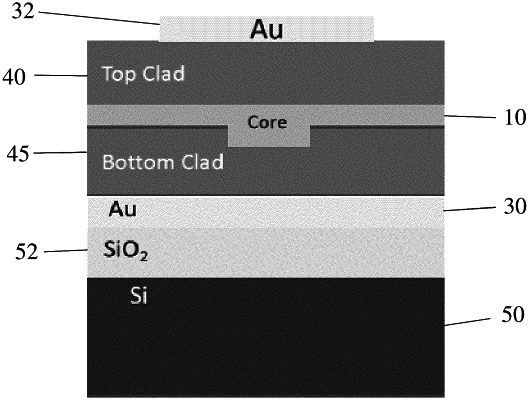| CPC G02F 1/166 (2019.01) [G02B 1/046 (2013.01); G02B 1/048 (2013.01); G02F 1/3611 (2013.01); G02F 1/3614 (2013.01); G02F 1/3617 (2013.01); G02F 1/365 (2013.01); G02F 2202/022 (2013.01)] | 11 Claims |

|
1. An electro-optic device comprising: (i) an electro-optic polymer core comprising a first host polymer and a first nonlinear optical chromophore; and (ii) a cladding comprising a second host polymer and a second nonlinear optical chromophore; wherein the first nonlinear optical chromophore has a structure according to the general formula (I):
D-Π-A (I)
wherein D represents a first organic electron-donating group: A represents a first organic electron-accepting group having an electron affinity greater than the electron affinity of D; and Π represents a first bridge covalently bonded to A and D, wherein the first bridge comprises a 2-4 carbon diyl moiety, wherein the diyl moiety is arranged as the shortest path between the first electron-donating group and the first electron-accepting group;
wherein the second nonlinear optical chromophore has a structure according to the general formula (II):
D′-Π′-A′ (II)
wherein D′ represents a second organic electron-donating group; A′ represents a second organic electron-accepting group having an electron affinity greater than the electron affinity of D′; and Π′ represents a second bridge covalently bonded to A′ and D′; and wherein the cladding has an index of refraction that is less than an index of refraction of the electro-optic polymer core, and wherein the second nonlinear optical chromophore is present in the second host polymer in a concentration such that the cladding has a conductivity equal to or greater than at least 10% of the conductivity of the electro-optic polymer core at a poling temperature:
wherein Π′ is less conjugated than Π.
|